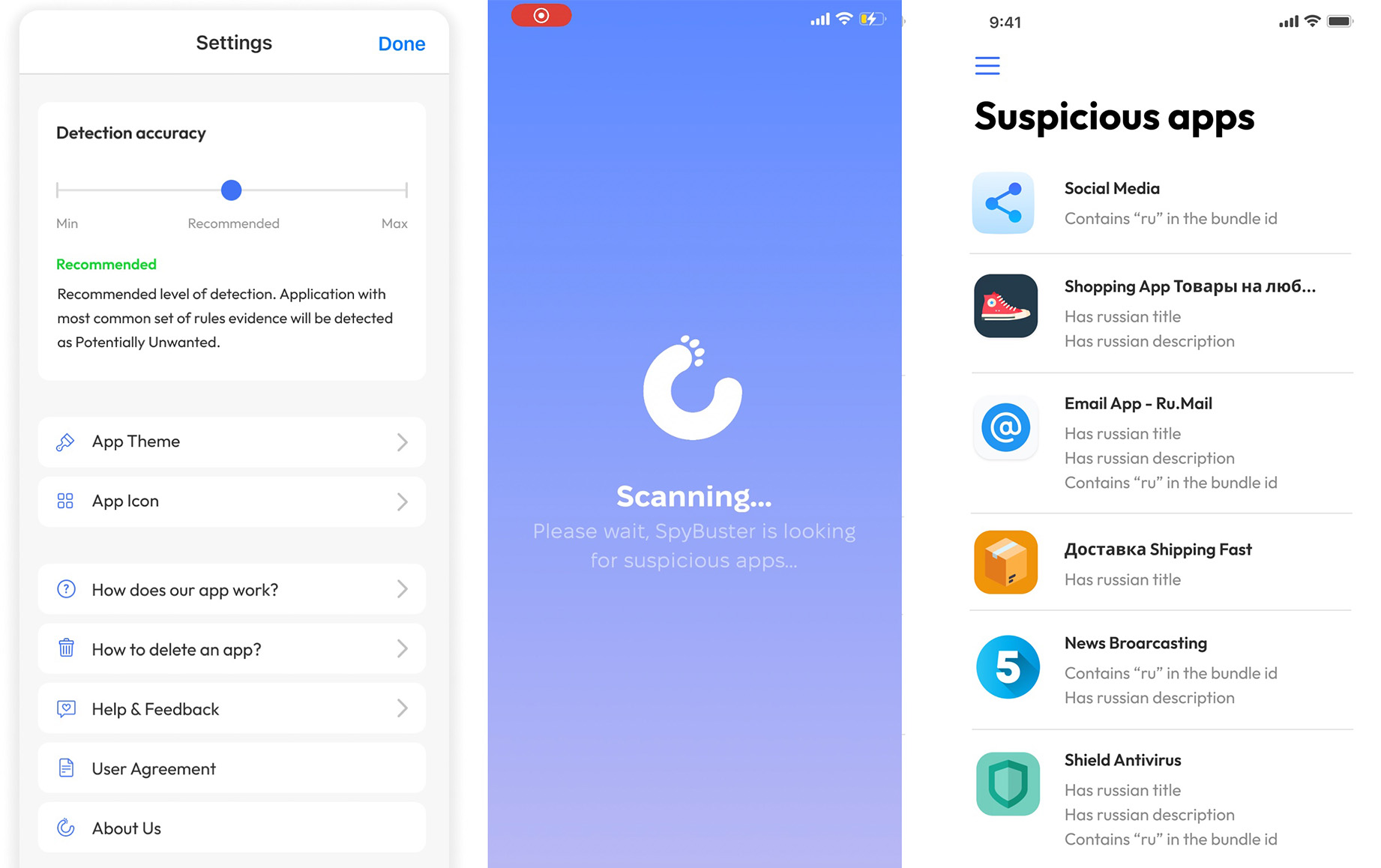News
SpyBuster Helps Identify iOS Apps With Servers In Russia And Belarus
When you launch SpyBuster, it automatically begins examining installed apps, looking for connections with Russia or Belarus.

Soon after Russia invaded Ukraine last February, the number of cyber attacks launched against both countries surged. Because targeted attacks against specific government entities are what usually makes the headlines, it’s easy to overlook the role we all play in today’s cyber warfare.
As we use our beloved iPhones to help us navigate our daily lives, we rely on a large number of apps, many of which send potentially sensitive information to remote servers. That’s usually not a problem except when the servers that the app is communicating with are located in Russia or Belarus, and the iOS version of SpyBuster by MacPaw is here to help you discover all apps on your device that do just that.
“In 2016, Russia adopted legislation that requires telecom providers to store private user data, including the content of voice calls, images, and text messages, for 6 months. It also orders them to retain metadata like sender and recipient information, sending time, and location, for 3 years,” explains Eugene Kalnyk, PR Specialist at MacPaw. “The so-called Yarovaya Law allows FSB and other Russian law enforcement agencies nearly unlimited access to any user data on Russian servers without a court order.”
SpyBuster debuted in March 2022 as a macOS privacy tool. It took MacPaw only three months to release it as a Chrome extension. With the recent release of the iOS version, users can finally protect their privacy everywhere — from desktop computers and laptops to the web to mobile devices.
Just like CleanMyMac X and other software applications developed by MacPaw, SpyBuster is designed to be user-friendly, and it shows through and through.
Also Read: DDoS Attacks Are A Growing Threat In Gaming
When you launch SpyBuster, it automatically begins examining installed apps, looking for connections with Russia or Belarus. It then presents a list of suspicious apps, allowing you to see at a glance why the apps should be avoided. Less experienced users may also appreciate the inclusion of detailed uninstall instructions.

The settings section of the SpyBuster app lets you adjust your detection accuracy setting, which influences how many privacy offenses an app has to commit before being flagged as suspicious.
To learn more about SpyBuster, visit its official website, where you can find download links for iOS, macOS, and Chrome.
News
Google Releases Veo 2 AI Video Tool To MENA Users
The state-of-the-art video generation model is now available in Gemini, offering realistic AI-generated videos with better physics, motion, and detail.

Starting today, users of Gemini Advanced in the MENA region — and globally — can tap into Veo 2, Google’s next-generation video model.
Originally unveiled in 2024, Veo 2 has now been fully integrated into Gemini, supporting multiple languages including Arabic and English. The rollout now brings Google’s most advanced video AI directly into the hands of everyday users.
Veo 2 builds on the foundations of its predecessor with a more sophisticated understanding of the physical world. It’s designed to produce high-fidelity video content with cinematic detail, realistic motion, and greater visual consistency across a wide range of subjects and styles. Whether recreating natural landscapes, human interactions, or stylized environments, the model is capable of interpreting and translating written prompts into eight-second 720p videos that feel almost handcrafted.
Users can generate content directly through the Gemini platform — either via the web or mobile apps. The experience is pretty straightforward: users enter a text-based prompt, and Veo 2 returns a video in 16:9 landscape format, delivered as an MP4 file. These aren’t just generic clips — they can reflect creative, abstract, or highly specific scenarios, making the tool especially useful for content creators, marketers, or anyone experimenting with visual storytelling.
Also Read: Getting Started With Google Gemini: A Beginner’s Guide
To ensure transparency, each video is embedded with SynthID — a digital watermark developed by Google’s DeepMind. The watermark is invisible to the human eye but persists across editing, compression, and sharing. It identifies the video as AI-generated, addressing concerns around misinformation and media authenticity.
While Veo 2 is still in its early phases of public rollout, the technology is part of a broader push by Google to democratize advanced AI tools. With text-to-image, code generation, and now video creation integrated into Gemini, Google is positioning the platform as a full-spectrum creative assistant.
Access to Veo 2 starts today and will continue expanding in the coming weeks. Interested users can try it out at gemini.google.com or through the Gemini app on Android and iOS.
























